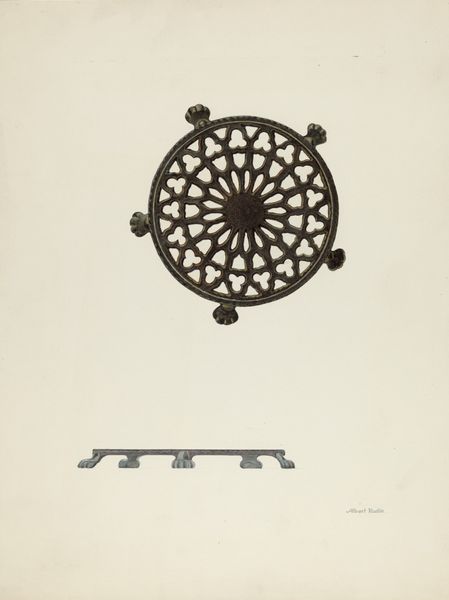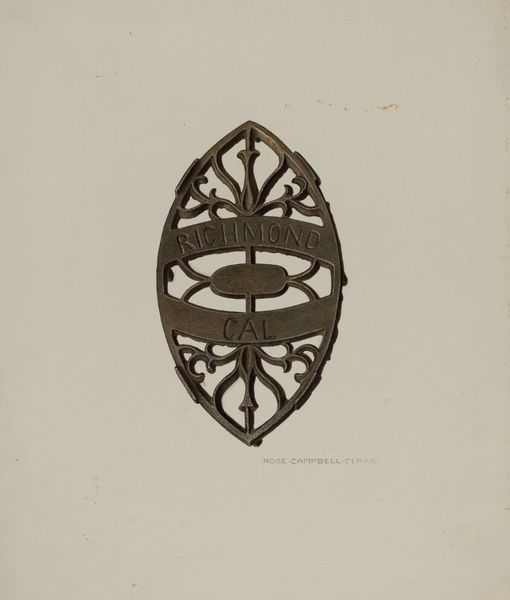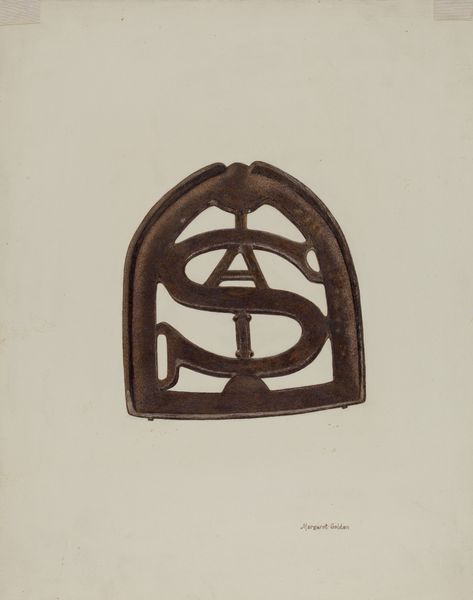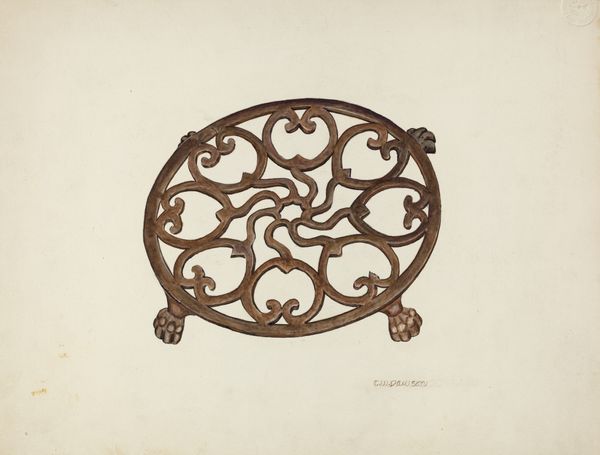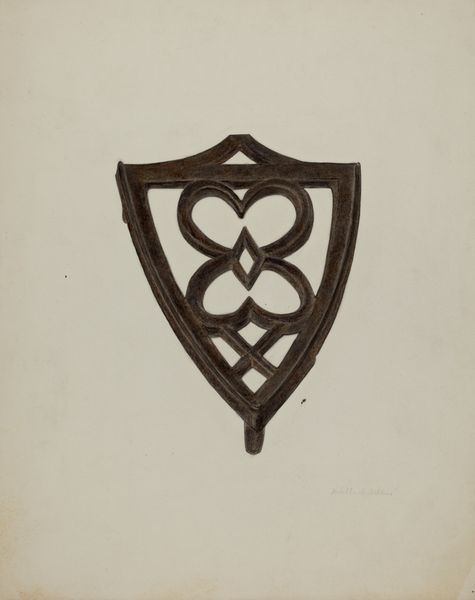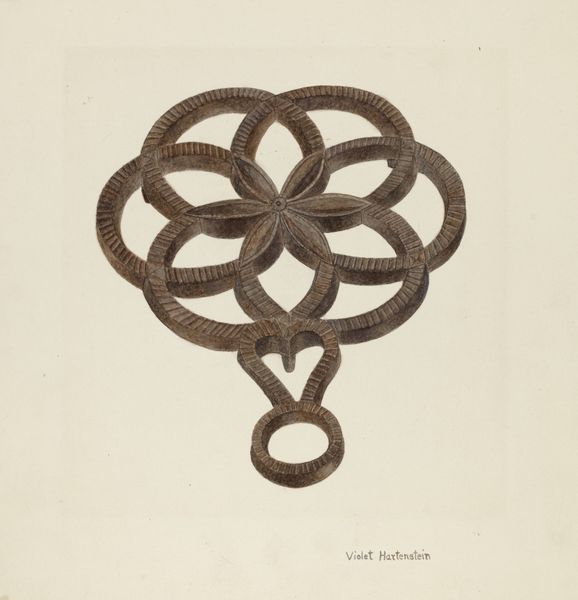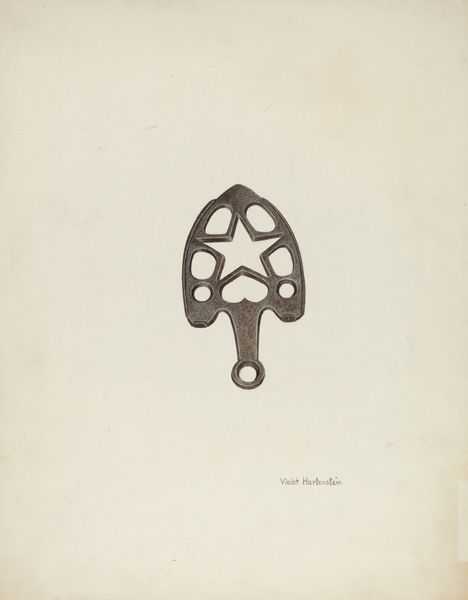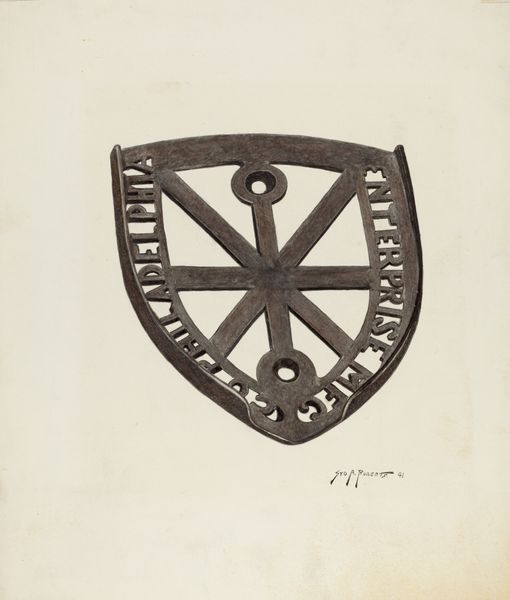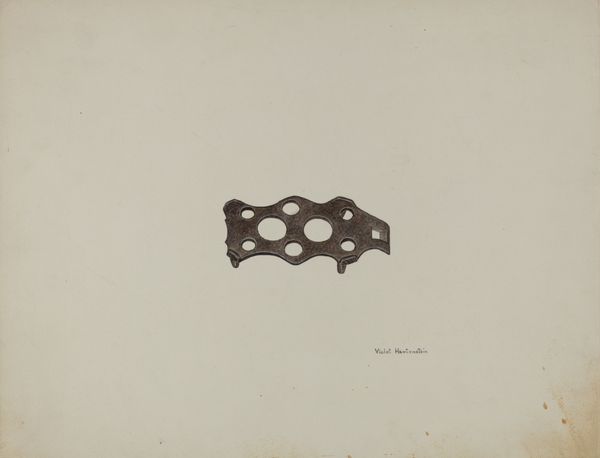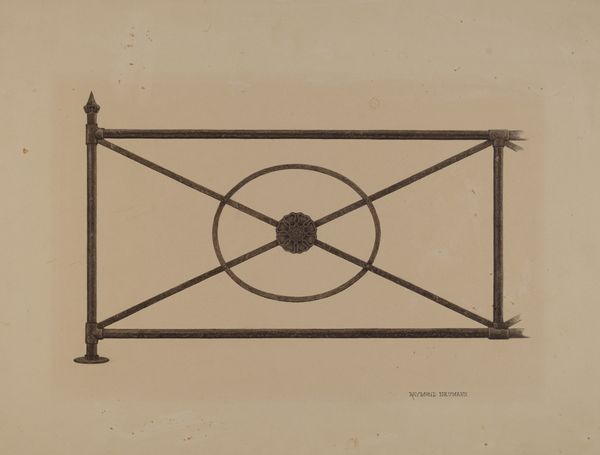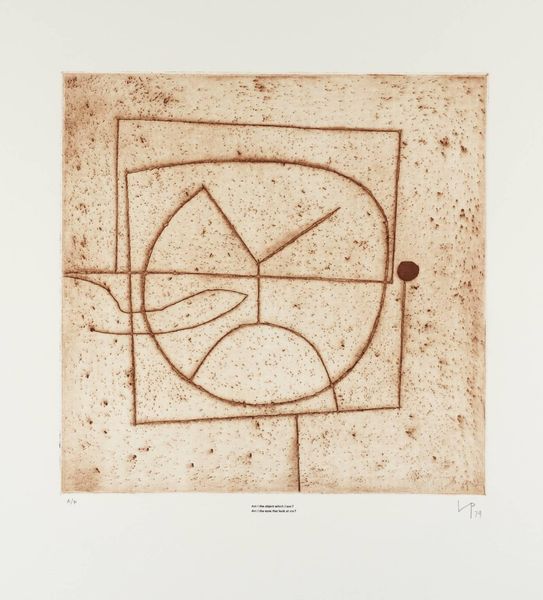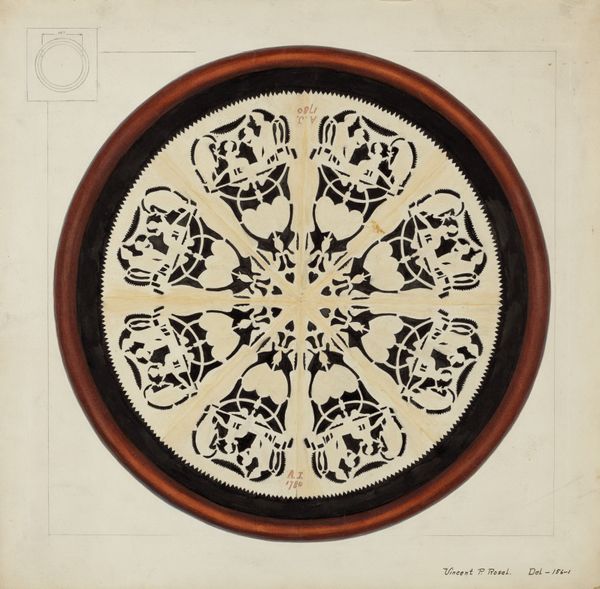
drawing, pencil
#
pencil drawn
#
drawing
#
pencil drawing
#
geometric
#
pencil
Dimensions: overall: 29 x 36.4 cm (11 7/16 x 14 5/16 in.)
Copyright: National Gallery of Art: CC0 1.0
Curator: Here we have "Trivet," a pencil drawing created around 1942 by Margaret Golden. It's a surprisingly intimate rendering of an everyday object. Editor: Intimate is a great word for it. My first impression is one of delicacy, almost fragility. The fine lines and muted tones create this sense of understated beauty. It invites us to contemplate something so simple and functional. Curator: Absolutely. Consider the trivet itself – its very design incorporates age-old solar symbolism. That central point with radiating spokes connects it to various cosmologies of sun worship. It's a subtle reminder of the warmth, light, and vitality associated with the sun, integrated into daily life. Editor: From a purely formal point of view, the balance achieved with the radiating spokes is captivating. Note how the negative space is as important as the material itself; the gaps and voids define the work as much as the pencil strokes do. There's a play between positive and negative forms, resulting in this very open yet structured aesthetic. Curator: Precisely, and beyond that structure, the repeated radial symmetry almost suggests the cyclical nature of home and family, protection, warmth... those concepts we culturally associate with 'hearth and home.' Trivets exist to insulate tabletops, right? And more broadly that translates into protection for loved ones. Editor: Protection… I see the shape almost as an industrial mandala – a meditative representation of functionality. By framing it through artistic methods, Golden invites us to rethink utilitarianism, seeing it, not merely as pragmatic but perhaps imbued with subtle beauty. Curator: And it challenges our notions of 'artistic subject matter', placing importance on ordinary and traditionally "unglamorous" household items. She's hinting at stories told, histories lived within the domestic space. Editor: Looking closely at the line quality, I detect subtle shifts in pressure and weight that grant dimension to the rendering; without this careful modulation, the trivet would feel two-dimensional. The materiality of the medium, pencil on paper, contributes to the unique presence and the visual impact. Curator: For me, this work becomes an emblem of endurance in a time of war, as the trivial becomes treasured. And this connects with our understanding of the time it was made: preserving domestic objects became vital. Editor: Agreed. Its quiet observation elevates something ordinary to something truly remarkable. Curator: Ultimately, it is these interwoven interpretations of home that solidify our reading of "Trivet" as a lasting work.
Comments
No comments
Be the first to comment and join the conversation on the ultimate creative platform.
